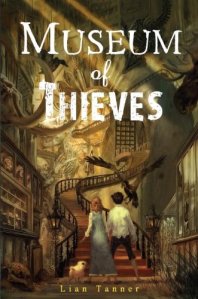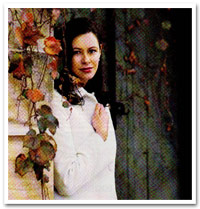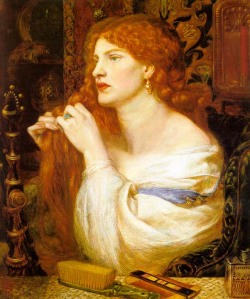I have been featuring fantastic female fantasy authors (see disclaimer) but this has morphed into interesting people in the speculative fiction world. Today I’ve invited the talented Lian Tanner to drop by.
Watch out for the give-away question at the end of the interview.
 Q: Museum of Thieves won the Aurealis Children’s Fiction Award in 2010. (Among many other notables and awards). This must have been a real buzz for your first book. It was going to be a stand-alone but it is now a trilogy. Did this mean a radical rethink, or did it all just flow?
Q: Museum of Thieves won the Aurealis Children’s Fiction Award in 2010. (Among many other notables and awards). This must have been a real buzz for your first book. It was going to be a stand-alone but it is now a trilogy. Did this mean a radical rethink, or did it all just flow?
A: Yes, I was so enormously pleased about the Aurealis Award. Museum had been shortlisted for a couple of things before that, and hadn’t won, and I was beginning to get that ‘always a bridesmaid’ feeling. <ahem> Not that I care about awards, you understand … <laughs>
As for the trilogy thing, I had originally intended Museum of Thieves to be a stand-alone novel, and so in my early drafts I killed off the villains at the end. When I realised that I wanted to make it the first book in a trilogy, the main thing I had to do was add a postscript, making it clear that the villains hadn’t died after all, but were still out there somewhere and would presumably be back at some stage.
Apart from that, I really didn’t change it a lot – I wanted the book to still be able to stand alone as much as possible. When I’m reading, I really hate major cliff-hangers at the end of a book. I don’t mind teasers that make me want to read the next book in a series, but I get very irritated if there’s not at least a temporary resolution of the action.
 Q: There are two types of covers that I’ve been able to find the illustrated covers which are very nice and these deliberately aged books that look like they were printed in the 1960s. Have readers told you which they prefer?
Q: There are two types of covers that I’ve been able to find the illustrated covers which are very nice and these deliberately aged books that look like they were printed in the 1960s. Have readers told you which they prefer?
A: You often hear about authors hating their covers, but I’ve been very lucky with mine so far – I’ve loved them all. The deliberately aged covers are the Australian ones (Allen & Unwin) and the illustrated ones are American (Random House). There are also some rather nice German covers (Arena Verlag) that are completely different again.
When I’m talking to groups of kids I always ask them which ones they prefer. And it seems the marketing and design departments in both Australia and the US have pretty much got it right – the Australian kids overwhelmingly prefer the Australian covers and the American overwhelmingly prefer the American covers.
 Q: On your Inspiration Page you have a number of photos, quotes and a very convoluted plot map. (I keep an inspiration file for my books). Many of the writers I interview make up play lists for specific music while they write a certain book. Are you a visual person as opposed to an aural person?
Q: On your Inspiration Page you have a number of photos, quotes and a very convoluted plot map. (I keep an inspiration file for my books). Many of the writers I interview make up play lists for specific music while they write a certain book. Are you a visual person as opposed to an aural person?
A: Definitely visual rather than aural. In the past I’ve tried to write to music – mainly because I’ve seen some of those playlists and I was curious to see if it would work for me. But I found it almost impossible. Bird calls are fine, when my office window is open, and I tend to have classical music on very quietly in the background, but anything else is much too distracting.
Visually though I always spend a lot of time collecting photos and drawings of people, places and miscellaneous objects before I start writing. That’s pretty much a necessity for me. I like to have character pictures dotted around my office and on my desk. I also really like to find some wallpaper for my desktop and some screensaver images that relate strongly to whatever I’m working on, so I’m immersed in it while I work. Currently I’m surrounded by icebergs.
 Q: In a Q& A on Readings you talk about your love of words, specifically old words like Slubberdegullion (a dirty nasty person) and Forswunk (worn out by hard labour). Did you read a lot of Dickens when you were a kid? And do you collect words?
Q: In a Q& A on Readings you talk about your love of words, specifically old words like Slubberdegullion (a dirty nasty person) and Forswunk (worn out by hard labour). Did you read a lot of Dickens when you were a kid? And do you collect words?
A: I was actually put off Dickens as a child by having to read Great Expectations at school. My teacher loved it, but I thought Pip was an irritating and ungrateful wimp, and I loathed his relationship with Estella. (I loathed Estella too.) As an adult I’ve read quite a few of Dickens’ books and discovered the value in them, but have never gotten over my dislike of Pip.
And yes, I do collect words and phrases, particularly ones that have fallen from favour. My current favourite is ‘idle-worms’, which supposedly once bred in the fingertips of lazy girls. If they existed, my fingertips would be riddled with them.

Q: You were born in Tassie and have lived there most of your life, but you did live in Papua New Guinea for three years. I see you were a teacher there. It must have been a very different world. Have you been able to incorporate any of the things you experienced in Papua New Guinea in your books?
 A: Papua New Guinea was a bit of an eye-opener for me. I was twenty-three when I went there, and had never lived outside Tasmania, so it was hugely different and very challenging. My first year I taught in a school just outside Port Moresby, run by Catholic nuns. My second and third years I was at a little bush school thirty km from Rabaul on the Gazelle Peninsula. That school had about 150 kids and three teachers when I arrived – one of those teachers had a full-time job in Rabaul and used to come down in his morning break. The principal trained the kids for interschool sports by chasing them around the oval with a whip, and quite a few of them carried serious scars from not running fast enough.
A: Papua New Guinea was a bit of an eye-opener for me. I was twenty-three when I went there, and had never lived outside Tasmania, so it was hugely different and very challenging. My first year I taught in a school just outside Port Moresby, run by Catholic nuns. My second and third years I was at a little bush school thirty km from Rabaul on the Gazelle Peninsula. That school had about 150 kids and three teachers when I arrived – one of those teachers had a full-time job in Rabaul and used to come down in his morning break. The principal trained the kids for interschool sports by chasing them around the oval with a whip, and quite a few of them carried serious scars from not running fast enough.
In a lot of ways I think PNG woke my imagination from its slumbering state. I’ve incorporated some of the people I knew there in my writing – in fictional form – but have never yet used any of the events to a great degree. I will one day – there are a number of things (apart from the sports training) that have stayed in the back of my mind and are just waiting for the right vehicle to emerge.
Q: You studied drama when you were 38 and travelled around Tasmania schools playing all sorts of characters. You say you were shy as a child. What made you turn to drama?
 : It was partly accidental, I think, though I always liked drama at school – it was a way of stepping past my shyness. But when I was in my late twenties and early thirties I hung around with a bunch of people who were very involved in music and political street theatre. Eventually we went from street theatre to amateur stage dramatics, and one of my friends decided to enrol in drama school to consolidate her various skills.
: It was partly accidental, I think, though I always liked drama at school – it was a way of stepping past my shyness. But when I was in my late twenties and early thirties I hung around with a bunch of people who were very involved in music and political street theatre. Eventually we went from street theatre to amateur stage dramatics, and one of my friends decided to enrol in drama school to consolidate her various skills.
At that time in my life I had never really settled to anything as far as work/career was concerned, but the theatre work struck a real chord for me, and I joined my friend at drama school. It’s one of the best things I ever did. I used to write a lot as a child, but pretty much stopped in my teenage years. Drama school was the thing that got me started again, that showed me how to be creative under pressure, as well as teaching me about dialogue and character motivation and all those other useful things that translate so wonderfully from the theatre to prose.
 Q: A lot of women who write for children feel that they have to have a boy as the main protagonist, otherwise boys won’t read their books. They’ll then bring a girl in as a secondary protagonist. But the main character in Museum of Thieves and City of Lies is clearly Goldie Roth, and the boy Toadspit is secondary. Was this deliberate? Were you concerned about whether boys would read your books?
Q: A lot of women who write for children feel that they have to have a boy as the main protagonist, otherwise boys won’t read their books. They’ll then bring a girl in as a secondary protagonist. But the main character in Museum of Thieves and City of Lies is clearly Goldie Roth, and the boy Toadspit is secondary. Was this deliberate? Were you concerned about whether boys would read your books?
A: It has always seemed to me a total cheat that,  because authors assume girls will read books with boy protagonists but boys won’t read books with girl protagonists, they nearly always make their main character a boy to capture the broadest market. Where does this leave girls? Always in second place, and with no exciting role models!
because authors assume girls will read books with boy protagonists but boys won’t read books with girl protagonists, they nearly always make their main character a boy to capture the broadest market. Where does this leave girls? Always in second place, and with no exciting role models!
Basically I write for myself when I was 11, and at that age I adored books with bold girls in them, so I was very clear right from the start that I wanted my main character to be a girl. Knowing the sort of story I was intending to write, I thought that boys would probably also enjoy the book, and I did want to have an important boy character. But my main intention was to tell Goldie’s story.
Interestingly, the boy/girl thing hasn’t really been an issue since the books came out. Girls love them and so do boys – mainly I suspect because they’re a good strong adventure series, and that appeals to both genders. Or maybe this is one of those borders that has blurred a little over the last few years – I notice that Suzanne Collins’ Hunger Games trilogy seems to have almost as many male fans as it does female, and I’m sure it’s not the only example.
 Q: And here’s the fun question. If you could book a trip on a time machine, where and when would you go, and why?
Q: And here’s the fun question. If you could book a trip on a time machine, where and when would you go, and why?
A: For a long time I have really wanted to go back to early Hobart and walk down those dusty, smelly, noisy streets. It’s a city I love, and I would dearly love to see its beginnings. I think a lot of my writing – even though it’s fantasy – has been influenced by early Hobart, and it’s a major source of inspiration for me, so to be able to wander around and poke into the shops and talk to people in that little colonial outpost would be my idea of heaven. I’d probably stalk two of my great grandmothers while I was there too – especially the one who was a diarist and a poet.
Lian has a paperback copy of the US edition of Book 1, a hard back of the US edition of Book 2 or an audio book of Book 1, as read by Claudia Black. The winner can choose.
Give-away Question:.
What sort of museum would you like to invent?
Catch up with Lian on GoodRreads
Lian’s advice for young writers





















